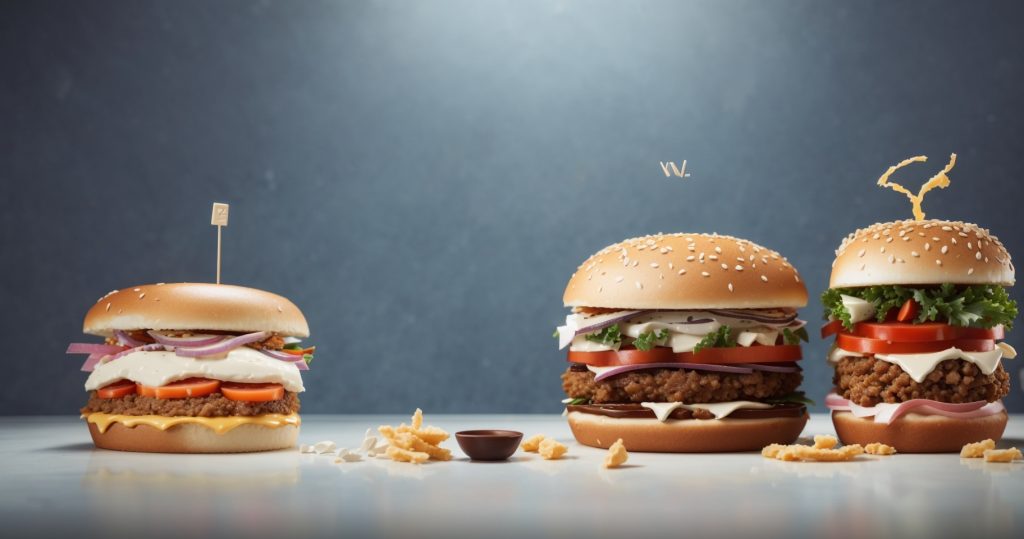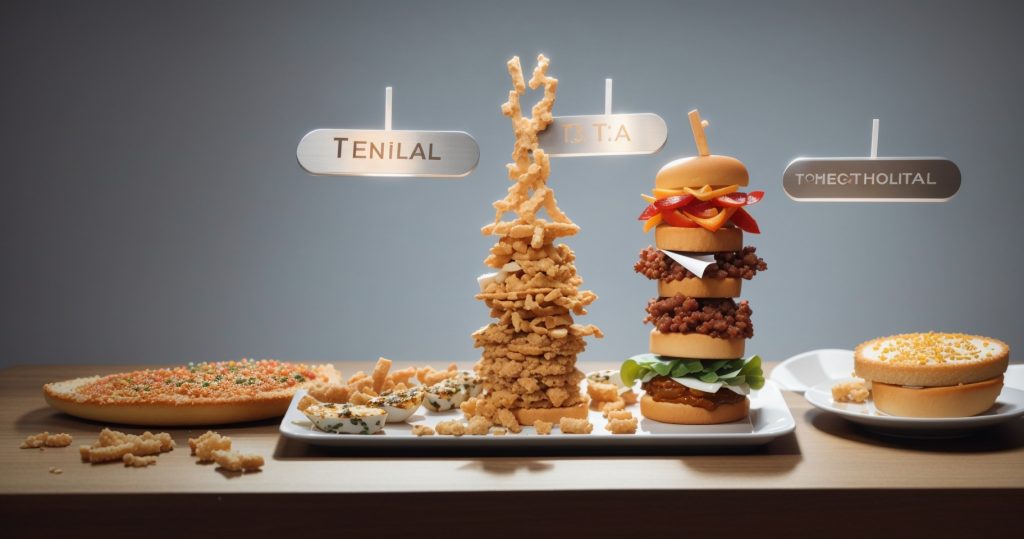As an Amazon Associate, I earn from qualifying purchases

Actual vs. Theoretical food
Welcome to the interesting universe of culinary expressions, where flavors, fixings, and inventiveness meet. One of the key perspectives that each cook, café proprietor, or food devotee wrestles with is the idea of “Genuine versus Hypothetical Food Cost.” An idea rises above the limits of the kitchen and digs profound into the domain of business the board. Go along with me on an excursion as we investigate the fragile harmony between what’s moved toward the menu and what really winds up on the plate, and find the monetary complexities that assume a vital part in the culinary business. Thus, hone your blades and set up your taste buds, as we set out on a culinary experience to unwind the secrets of genuine versus hypothetical food cost. In the fast-paced world of the restaurant industry, understanding your food costs is like wielding a magic wand 🪄. 🧙♂️ To run a successful eatery, you need to get your actual and theoretical food costs in perfect harmony. 🤝 So, let’s dive deep into the culinary world and explore the actual vs. theoretical food cost conundrum. 🌊
Actual vs. Theoretical food cost: What is the distinction?
theoretical food cost is what your food expenses ought to be for a period dependent essentially upon what you sold and the expense of those things as indicated by the most recent fixing costs. It expects zero breakage, shrinkage, or wastage.
To show up at precise hypothetical food costs, you want:
Precise recipes that record for all that goes into a dish
The latest fixing costs for precise recipe costs
Definite marketing projections you can get from a POS like Toast
Genuine food costs are your genuine food costs for a period in light of what you sold and after you’ve figured in the item utilized wastage, breakage, and shrinkage. Genuine food cost will constantly be higher than hypothetical food cost, as it incorporates something beyond the expense of menu things.
Actual vs. Theoretical food recipe for top to bottom food cost investigation
The real versus hypothetical recipe is very straightforward. It depends on precise computations of your eatery cost of products sold, or Pinions.
The AvT recipe is essentially the distinction between your genuine expense of products sold and the hypothetical expenses of merchandise sold (Gear-teeth).
Real (Gear-teeth) – Hypothetical (Pinions) = Food cost difference
You can figure your Gear-teeth utilizing the accompanying recipe:
Starting stock + Bought stock – Finishing stock = Cost of merchandise sold (Gear-teeth)
Once more, hypothetical Pinions features what your Gear-teeth ought to be on the off chance that you in a real sense work at most extreme effectiveness with zero waste or decay.
Take a breath…you ought to realize that nobody works at most extreme effectiveness with zero waste or decay. It’s clearly something worth talking about to take a stab at, however therefore your hypothetical Pinions will continuously be not exactly your real Machine gear-pieces.
Your genuine Gear-teeth is the genuine expense of what you spent to make all that you sold. When you begin checking Pinions, you can begin representing waste, decay, and so on into your hypothetical Gear-teeth to get a more exact estimate.
📊 Crunching the Numbers : Actual Food Cost
The Basics 💡
Before we don our chef hats and aprons, let’s break down the basics. Actual food cost, often dubbed as the “real deal,” represents the actual money you fork out for ingredients. It’s the cash you hand over to suppliers, the greens you spend on greens 🥦, and the cheese you splurge on for that perfect pizza 🍕.
The Calculation 🧮 of Actual vs. Theoretical food
Actual Food Cost (%) = (Total Cost of Ingredients / Total Revenue) x 100
It’s that simple! 🎯
But here’s where it gets interesting 🤩: you want this percentage to be as low as possible, while still maintaining quality. Why? Because it means you’re squeezing every ounce of profit out of your menu. 🤑
The Dance of Dollars 💰
Imagine you’re running a trendy taco joint 🌮. You buy fresh avocados for your famous guacamole, and they cost you $1 each. Each batch of guac uses 10 avocados, so that’s $10. If you sell each portion of guacamole for $3, your actual food cost for guac is 33.33% ($10 / $3 x 100).
The Sneaky Expenses 🕵️♂️
Watch out for hidden expenses that can sneak into your actual food cost. Think about delivery fees, storage costs, and even kitchen utensils. These seemingly minor expenses can add up and affect your bottom line. 🔍
📈 Breaking Down Theoretical Food Cost
The Theory 🧪
Now, let’s put on our lab coats 🥼. Theoretical food cost is the cost of ingredients in an ideal world where everything is perfect. It’s like your food cost on cloud nine ☁️. In this utopian scenario, there’s no waste, no spillage, and every dish is portioned perfectly. 🚀
The Formula 🧪
Theoretical Food Cost (%) = (Theoretical Cost of Ingredients / Total Revenue) x 100
But remember, this is the “theory.” In the real world, perfection is elusive, like finding a unicorn 🦄.
Finding the Balance ⚖️
The real magic happens when you compare your actual food cost with the theoretical one. 🪄✨ If your actual cost is significantly higher than the theoretical cost, it’s time to roll up your sleeves and figure out why.
🍔 Bringing It All Together
Now that we’ve dissected actual and theoretical food costs, you might wonder, “How does this impact my restaurant?” 🤔
- Profit Maximization: By keeping your actual food cost lower than theoretical, you’re ensuring every plate is a step towards profit, not a step towards debt.
- Quality Control: Monitoring these costs helps you maintain the quality of your dishes. Freshness and consistency are key to keeping those customers coming back for more.
- Menu Pricing: Armed with this knowledge, you can price your menu items strategically. It’s not about cutting corners; it’s about balancing the books while delighting taste buds.
- Sustainability: Reducing food waste isn’t just good for your bottom line; it’s great for the planet. 🌍
In conclusion, mastering the art of actual vs. theoretical food costs is like finding the secret recipe to success in the restaurant world. 🗝️ Keep your costs low, your quality high, and your customers smiling 😃. And remember, there’s no magic involved, just some good old-fashioned number crunching and a dash of creativity! 🌟
Maximizing Profitability: Understanding Actual vs. Theoretical Food Costs in Restaurants
Successful restaurant operators understand the importance of tracking food costs. It’s not just about keeping an eye on expenses; it’s about optimizing your operations and maximizing profitability. In this article, we’ll delve into the concept of Actual vs. Theoretical (AvT) food costs, a sophisticated tool that advanced operators are increasingly using to gain a competitive edge in the restaurant industry.
Basic Food Cost Tracking: A Necessity of Actual vs. Theoretical food
Before we delve into AvT, let’s establish the fundamental importance of tracking food costs. For restaurant owners and managers, monitoring food costs is a non-negotiable task. It serves several critical purposes:
- Supplier Price Changes: Keeping an accurate record of food costs allows you to promptly identify supplier price fluctuations. This knowledge is essential for adjusting your budget and menu pricing accordingly.
- Maintaining Accurate Prime Costs: Prime costs, which include food and labor expenses, are at the core of a restaurant’s financial health. Tracking food costs ensures that you maintain accurate prime cost calculations, aiding in budgeting and financial planning.
- Identifying Cost Trends: Analyzing historical food cost data helps you identify cost trends over time. This insight enables you to make informed decisions about menu adjustments, portion control, and vendor selection.
The Evolution of Actual vs. Theoretical (AvT) Food Costs

While tracking basic food costs is crucial, advanced operators are taking it a step further with AvT calculations. So, what exactly is AvT?
Actual vs. Theoretical Food Costs (AvT): A Deeper Dive
AvT is a sophisticated reporting method that compares the actual food costs incurred during a specific period with the theoretical costs based on established standards. In other words, it answers the question: “What should our food costs have been, given our sales and inventory, versus what they actually were?”
This comparison provides a nuanced understanding of your restaurant’s financial performance, going beyond mere expense tracking. AvT uncovers areas where your operation might be losing money or where you can improve efficiency.
AvT vs. AvT Yield: Understanding the Difference of Actual vs. Theoretical food
It’s essential to distinguish between AvT food cost and AvT yield. While both are valuable metrics, they serve different purposes.
- AvT Food Cost: This metric focuses on financial forecasting and cost control. It helps you understand the variance between expected and actual food costs.
- AvT Yield: On the other hand, AvT yield delves into the scientific aspect of your kitchen operations. It measures the efficiency of your kitchen staff in terms of food yield and waste, often considering factors like cooking techniques and portion control.
The Benefits of AvT Reports
Implementing AvT reporting in your restaurant can yield several significant benefits:
- Cost Control: AvT reports empower you to gain tighter control over your restaurant’s costs, ultimately increasing profitability.
- Efficiency Improvement: Identifying variances in food costs can lead to operational improvements, such as better inventory management and portion control.
- Financial Health Snapshot: AvT reports provide a clear picture of your restaurant’s financial health, allowing you to make data-driven decisions.
Calculating and Tracking AvT
To harness the power of AvT, it’s essential to use the right software. Modern restaurant management systems often include AvT capabilities, simplifying the process. To calculate AvT food costs:
- Establish clear standards for each menu item, including ingredient quantities and prices.
- Record actual ingredient usage and expenses during a specific time frame.
- Utilize AvT software to compare the theoretical costs with the actual costs.
- Analyze the variances and take actionable steps to improve cost control.
In conclusion, understanding and implementing Actual vs. Theoretical food cost analysis can be a game-changer for restaurant operators. It goes beyond basic cost tracking and provides a holistic view of your restaurant’s financial performance. By embracing AvT, you can fine-tune your operations, boost profitability, and ensure the long-term success of your establishment
Visit our website: 500eastsh.com
